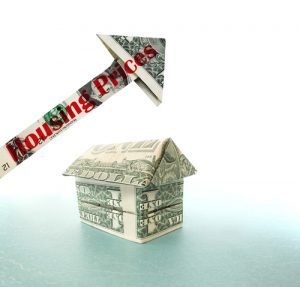 A new report on July home sales by Redfin paints an increasingly common phenomenon in the U.S. housing market: While prices keep going up the rate at which prices are growing is decreasing.
A new report on July home sales by Redfin paints an increasingly common phenomenon in the U.S. housing market: While prices keep going up the rate at which prices are growing is decreasing.
According to Redfin, U.S. home-sale prices compared to a year ago increased 5.3 percent in July, to a median of $307,400. At the same time, the price growth rate dropped for the fifth consecutive month, “and has not been this low since September 2016,” the report stated.
In Portland, home prices were up 4 percent year over year, but that, reported Redfin, was the lowest price growth in 41 months. Similarly, while Seattle home prices increased 8 percent compared with last year, that was the lowest growth in 27 months. Even San Jose's 19 percent uptick, the highest growth rate of any metro Redfin tracks, was the lowest price growth the city has seen in nine months.
“The Bay Area, Seattle, and Portland have been so competitive for so long that buyers and sellers have adjusted to those conditions and may feel uneasy about the changes we’re seeing in the market,” said Taylor Marr, Redfin's senior economist. “After several years of shrinking inventory and unsustainable price growth, I’m encouraged by these changes as a signal that we may be returning to a healthier, more balanced market.”
According to Redfin, Washington, D.C., and Baltimore are also slowing down. Home prices grew 0.7 percent in Washington, D.C., while sales grew almost 13 percent in July. Inventory in D.C. also grew 9 percent.
Meanwhile, Baltimore's prices fell 0.5 percent as sales surged almost 56 percent since last year, Redfin reported.
Twenty-eight percent of homes on the market in July had a price drop, which is 3 percent more than last July's total.
In a similar push-and-pull dynamic, homes sales increased 4.1 percent nationally over July 2017 as inventory declines continued to moderate. The number of homes for sale was down 5.4 percent year over year, making July the third month of supply declines around the 5 percent mark, Redfin reported. That follows 19 months of inventory declines of over 7 percent.
For the second month in a row, inventory increased year over year by double digits in San Jose, (28 percent), Seattle (27 percent), and Portland (22 percent).
“These markets also experienced sales declines of 11.9 percent, 6.4 percent, and 6.1 percent, respectively,” the report stated.
Homes that sold in July went under contract in a median 35 days, three days faster than last year and one day slower than in June.
“While homes are still selling near a record-fast pace, there are some signs competition is waning,” the report stated. “For the first time since March 2015, the share of homes that sold above asking price declined year over year—albeit slightly—from 26.5 in July 2017 to 26.2 percent last month.”

 theMReport.com Your trusted source for mortgage banking news
theMReport.com Your trusted source for mortgage banking news









